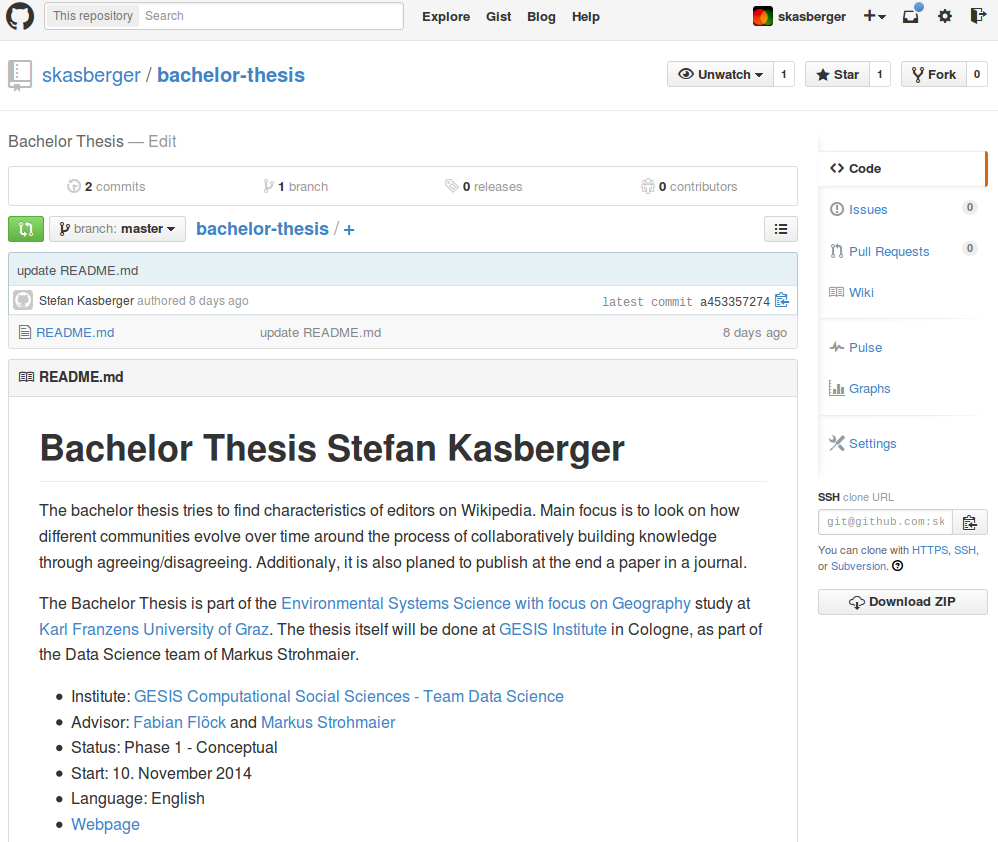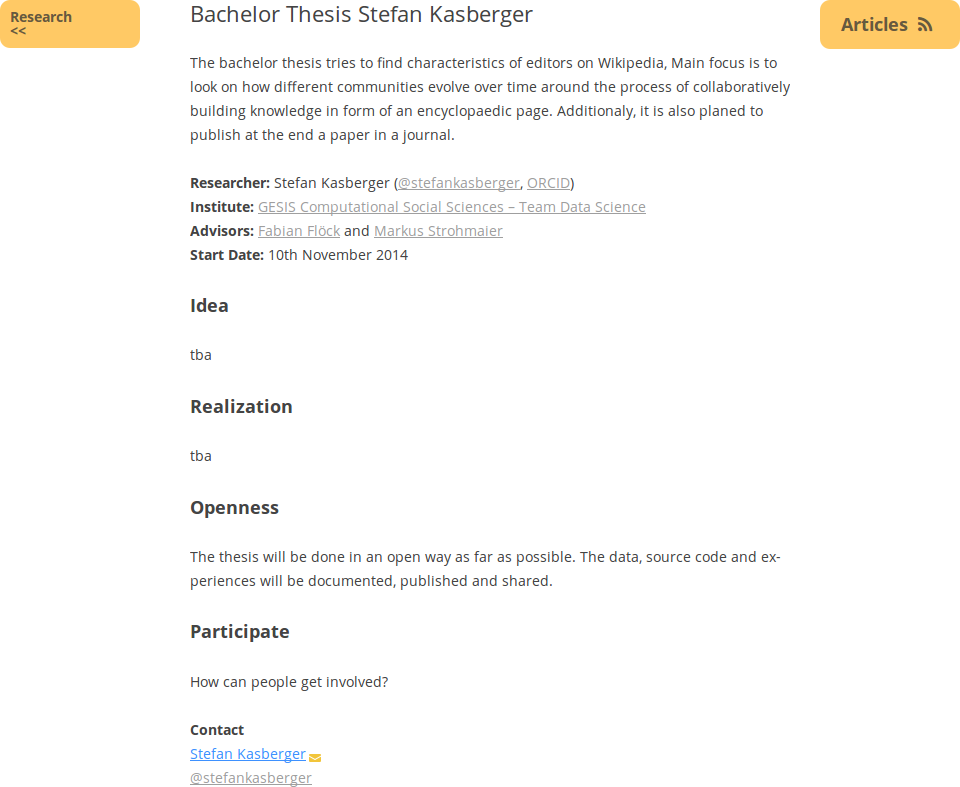Der letzte Monat im Rückblick
Zu Beginn eine Korrektur des letzten Sum Ups. Der Inhalt der Studie zu Förderungsreviews wurde missverständlich wiedergegeben. Die Ergebnisse der durchgeführten Simulation weisen lediglich auf die Konsequenzen möglicher Voreingenommenheiten hin, es werden aber keine empirischen Ergebnisse zu Förderinstitutionen vorgestellt. Für den österreichischen FWF wurde das für den Zeitraum 1998 – 2008 untersucht.
Intellektuelles Eigentum, Copyright und Urheberrecht, Open Access und Menschenrechte. In ihrem Bericht zu kulturellen Rechten fasst die UN-Sonderberichterstatterin Farida Shaheed den Status Quo des Urheberrechts aus Sicht des Rechts auf Wissenschaft und Kultur zusammen. Der Bericht diskutiert Argumente zur Öffnung von Wissen und Wissenschaft nicht nur auf Grund der Eigeninteressen einzelner Gruppierungen, sondern auf Basis grundlegender Rechte.
Status Quo von Open Science in Österreich… Die vielfältigen, teilweise parallelen, teilweise kollaborativen Projekte seitens öffentlicher Institutionen und zivilgesellschaftlicher Initiativen werden in einem Paper (Preprint) zusammengefasst. Ein Kapitel mit Blick in die Zukunft zeigt Fragen und Potenziale auf.
… und in der Welt. Einen sehr umfassenden Eindruck macht die Übersichtsseite zu Open Science Projekten und Organisationen von openhatch.org. Wer sich da noch nicht findet, ist eingeladen sich einzutragen.
Der Österreichische Wissenschaftsrat, die JKU Linz und die TU Graz unterzeichnen die Berliner Erklärung für Open Access. Sie haben damit die 500er Marke dieses Open Access Meilensteins durchbrochen.
Wikimedia hat eine Open Access Policy. Die Wikimedia Foundation verlangt ab sofort, dass wissenschaftliche Arbeiten die von ihr unterstützt werden, unter einer freien Lizenz veröffentlicht werden. Ebenfalls hat appear, ein österreichisches Entwicklungshilfeprogramm im Bereich Höhere Bildung und Forschung, eine Open Access Policy etabliert.
Wie funktioniert das nochmal mit dem Zweitveröffentlichungsrecht? Antworten auf häufig gestellte Fragen (FAQ) zu Nutzungsrechten, öffentlicher Förderung, und was man als Autor*in wissen soll, gibt es von der Schwerpunktinitiative “Digitale Information”. Die Aussagen sind für den deutschen Rechtsraum formuliert.
Ungereimtheiten mit Hybrid-Modellen. Artikel die von einem Verlag mit cc-by-nc-nd (Creative Commons mit Namensnennung, keine kommerzielle Nutzung, keine Veränderung) veröffentlicht sind, bot ein anderer Verlag hinter einer Bezahlschranke an – was bei dieser Lizenz nicht erlaubt ist.
Impact-Messung von offenen Haushaltsdaten. Das Forschungsprojekt in Zusammenarbeit von Open Knowledge, Digital Methods Initiative und Universität Amsterdam soll die Auswirkungen, Aktivitäten und Herausforderungen von offenen Haushaltsdaten erfassen.
Open Data von Porto bis Moskau. Europaweit gab es Workshops und Hackathons zu offenen Daten, Hard- und Software, Visualisierung, oder rechtlichen Rahmenbedingungen. Die Ergebnisse der europäischen Teilnehmer*innen am Open Data Day werden hier zusammengefasst.
Auch fehlgeschlagene Experimente haben ihren Wert – meistens als fehlendes Teil in jemand anderes Puzzle. Um den Wert von negativen Ergebnissen zu zeigen, hat PLOS eine Sammlung dazu gestartet.
Offenere Formate zum Wissensaustausch. Das Open Science Radio spricht über Unseminare auf Deutsch und Englisch.

Pleiaden, Public Domain by NASA, ESA and AURA/Caltech
Ein Blick nach Vorne
AISA nimmt die Arbeit auf. AISA steht für Associazione Italiana per la promozion della Scienza Aperta. Das neu gegründete Netzwerk hat sich die Verbreitung von Open Science in Italien zur Aufgabe gemacht. Es ist für Institutionen genauso wie für Individuen offen.
CeDEM-Registrierung ist offen. Die International Conference for e-Democracy and Open Government findet von 20. bis 22.05. an der Donau-Uni Krems statt.
Open for Collaboration. Das ist das Thema der Open Access Week 2015, von 19. bis 25. Oktober. Wie man mitmachen kann oder wo in der näheren Umgebung was stattfindet, kann man hier rausfinden.
Unsere Projekte
Updates der Open Science Templates. Die nützlichen Vorlagen für allgemeine Dokumentation von Projekten, Präsentationen oder Recherchen wurden aktualisiert.
Zum ersten Mal live im World Wide Web! Wir haben zusammen mit dem Biolab Montréal unseren ersten Google Hangout On Air abgehalten. Thema war Open Science für Bio-Hackers. Hat sehr viel Spaß gemacht, aber seht am besten selbst.





